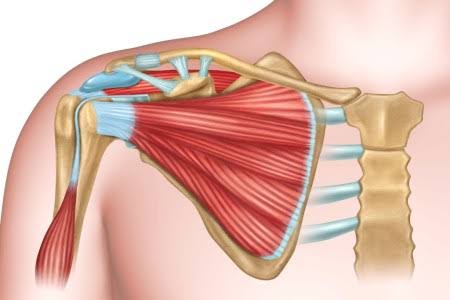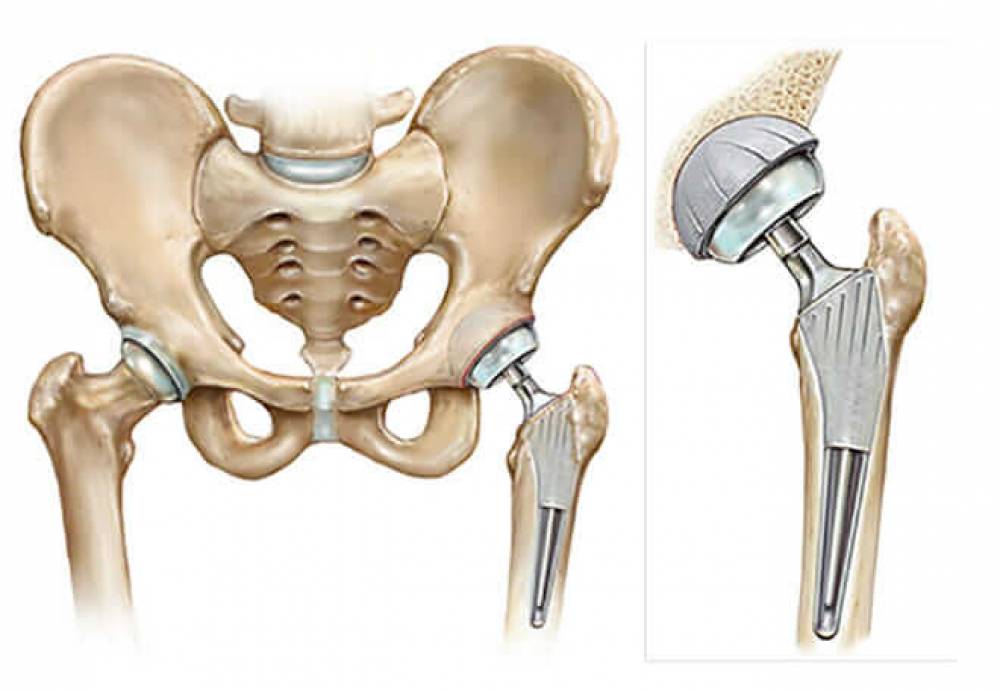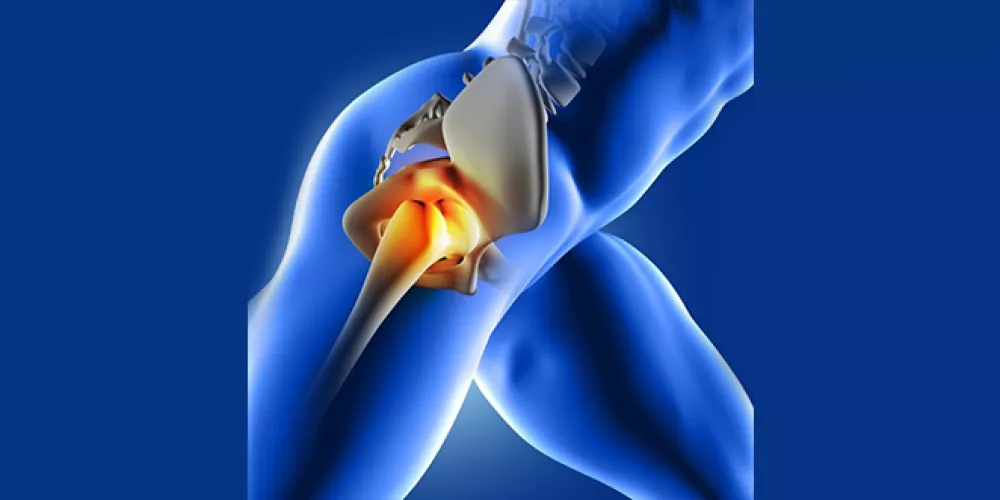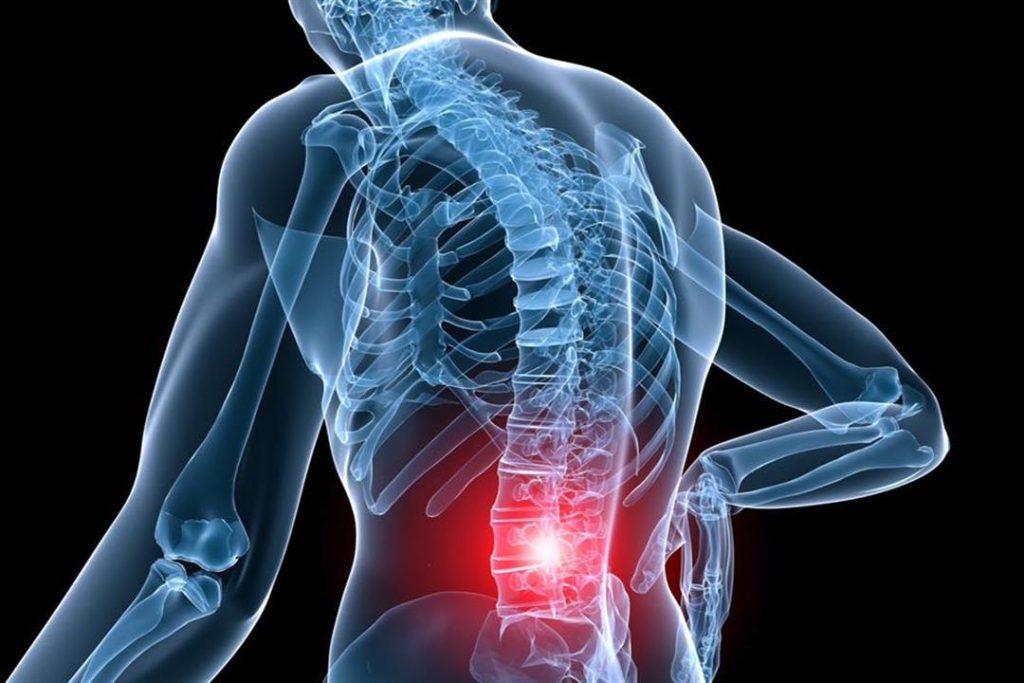Torn Shoulder Tendon: What Is the Treatment and Does It Require Surgery?
أخر تحديث :
Shoulder Tendon Tears
Tendon tears in the shoulder are common injuries that affect the shoulder joint. These tears can result from overuse of the shoulder in incorrect positions for extended periods, leading to gradual tendon deterioration.
Symptoms of shoulder tendon tears include pain, swelling, and redness in the affected area. The patient may also experience weakness in the shoulder’s range of motion. If the injury does not cause any disability or a decrease in shoulder movement, it usually does not require surgery. However, necessary treatment to increase the range of motion is essential.
If limited motion persists, surgical intervention may be necessary. A rotator cuff injury can be any type of irritation or overuse of these muscles and tendons. These tendons are called the rotator cuff tendons, and this condition causes severe pain and a reduction in shoulder range of motion.
Pain can also result from tendonitis, a condition that causes pain in the shoulder. Additionally, a partial tear in the tendons can lead to arm weakness and an inability to move the shoulder permanently.
If tendon tears are left untreated, the patient may experience permanent weakness in the arm and joint deterioration. In addition, the patient may also suffer from chronic pain. There are many different causes of shoulder pain, including muscle strain, trauma, osteoarthritis, and calcification.
When the tendons surrounding the shoulder weaken due to aging or excessive use, shoulder tendonitis or tenosynovitis may occur. This condition results in severe pain and a decreased range of shoulder motion.
Proper treatment for shoulder tendon tears is essential to regain shoulder movement and avoid potential complications. Consultation with a specialized physician is necessary to assess the condition and determine the appropriate treatment, whether it involves conservative treatment or surgery. Physical therapy exercises are also recommended to strengthen shoulder muscles and improve mobility.
What Happens If the Shoulder Tendon Is Cut?
Dear reader, here is a list of the effects and outcomes resulting from cutting the tendon in the shoulder:
- Loss of Muscle Strength: Cutting the tendon in the shoulder leads to the loss of the affected muscle’s ability to perform its natural movements. Moving the shoulder and using it in the same way becomes difficult.
- Change in Joint Function: Tendons play a crucial role in the smooth and easy movement of the joint. When the tendon is cut, it results in dysfunction of the joint, making it difficult to achieve a normal and flexible shoulder movement.
- Pain and Inflammation: Sharp pain and inflammation may occur in the area where the tendon was cut, leading to continuous and persistent pain in the affected area.
- Reduced Daily Mobility: Cutting the tendon affects a person’s ability to perform a wide range of daily movements due to the difficulty of moving the injured shoulder.
- Weakening of Surrounding Muscles: While other muscles may partially compensate for the role of the severed muscle, over time, weakness and numbness in the surrounding muscles may occur.
- Reduced Shoulder Stability: The tendon is part of the tissues that contribute to the stability of the shoulder. After the tendon is cut, the natural stability of the shoulder deteriorates, increasing the risk of other injuries.
- Decreased Daily Function: An individual may find it challenging to perform everyday tasks, such as turning keys or lifting heavy objects, due to the impact of the severed tendon on shoulder strength and movement.
Proper diagnosis and the recommendation of appropriate treatment by a healthcare specialist are crucial. Treatment may include physical therapy, strengthening the surrounding muscles, and shoulder strengthening exercises. In severe cases, surgery may be necessary to reconnect the tendon and restore shoulder function.
Does Cutting the Tendon in the Shoulder Require Surgery?
Cutting the tendon in the shoulder is a condition that may require surgery in some cases. Here are some reasons that may necessitate surgery:
- Ligament or Tendon Stretching or Tear: If you have stretching or tearing of ligaments or tendons in the shoulder, it may be necessary to undergo surgery to repair them. A joint surgeon works to reconnect the torn tendon to the shoulder and repair damaged ligaments.
- Nerve and Blood Vessel Damage: If nerves or blood vessels around the shoulder are damaged, surgery may be necessary to repair them and restore the shoulder’s normal functions.
- Rotator Cuff or Bicep Tendon Tear: Tearing of tendons in the rotator cuff, the biceps tendon, or other shoulder regions is a common cause of shoulder pain. In cases of significant tears, surgery may be the only way to repair the tendons and restore normal shoulder movement.
Shoulder Tendon Inflammation: Some individuals may suffer from shoulder tendon inflammation, and this surgical procedure is considered one of the effective treatments to alleviate pain and restore shoulder mobility.
Shoulder Injuries Resulting from Trauma or Rotator Cuff Inflammation: Trauma or repetitive stress on the shoulder can lead to tendon or ligament tears in the joint, necessitating surgery to repair the damage and alleviate pain.
However, it should be noted that in cases of partial tendon tears that do not result in disability or weakness in upward shoulder movement, non-surgical treatment may be sufficient to increase range of motion and reduce pain.
In general, the decision to undergo surgery depends on the patient’s condition, the severity of the injury, and its impact on their daily life. The surgeon should explain the details of the procedure and provide appropriate medical advice for the individual case.
What Is the Treatment for a Torn Shoulder Tendon?
Shoulder ligament injuries and tendon tears are common injuries that cause pain and restriction in shoulder movement. Available treatments for shoulder tendon tears vary based on the degree of the injury and its impact on shoulder function. Here is an extensive list of important treatments that can be followed for treating a torn shoulder tendon:
Non-surgical Treatment:
- Rest: Reducing movement in the injured shoulder and allowing it adequate rest for recovery is recommended.
- Ice: Applying ice to the shoulder for 15-20 minutes several times a day can reduce swelling and alleviate pain.
- Medication: Pain relievers prescribed by a doctor can be taken to alleviate pain and reduce inflammation.
- Physical Therapy: Engaging in physical therapy exercises under the guidance of a therapist is preferred to strengthen shoulder muscles and improve flexibility.
Surgical Treatment:
- Arthroscopic Surgery: Arthroscopic surgery is used to treat partial tendon tears where the surgeon inserts small instruments through a small hole in the shoulder to repair the tendons.
- Surgical Repair: In cases of complete tendon tears, surgery is often the preferred treatment. Surgeons repair the tear and attach the tendons after removing the damaged portion.
Additional Treatment: After surgery, rehabilitation and physical therapy are usually recommended to regain motion and strength in the injured shoulder.
Medications Used for Tendon Inflammation Treatment:
- Pain Relievers: Pain-relieving medications like aspirin, naproxen sodium, and ibuprofen can be used to alleviate pain.
- Non-steroidal Anti-inflammatory Drugs (NSAIDs): Some non-steroidal anti-inflammatory drugs are prescribed to reduce inflammation and swelling in the shoulder.
Whatever the appropriate treatment for a torn shoulder tendon, it is always advisable to consult a specialist physician. They can assess your condition and determine the optimal treatment based on their diagnosis, which is built on clinical symptoms and necessary test results.
How Long Does a Shoulder Tendon Tear Surgery Take?
In this exclusive list, we will discuss the duration of a shoulder tendon tear surgery and the factors that influence it. Shoulder tendon tear surgery is a surgical procedure used to treat tendon tears in the shoulder. This procedure requires a skilled and specialized physician, such as Dr. Amr Amal, a consultant in orthopedic and joint surgery at Ain Shams University. The post-operative treatment for a shoulder tendon tear surgery may take several weeks or months, depending on an individual’s health condition and the type of injury. During the recovery period, it is essential to be patient and strictly follow the doctor’s instructions.
One of the factors affecting the recovery duration is the type and severity of the injury. Patients with significant tears may require a longer recovery period to regain normal tendon function. After surgery, the patient should follow a specific rehabilitation program, including physical therapy sessions. This program aims to restore mobility, strength, and strengthen the muscles surrounding the shoulder.
Medical guidance to the patient also influences the recovery duration. Patients are advised not to overload the injured shoulder and to regularly consult an eye doctor to ensure that no complications develop. Shoulder tendon tear surgery is a surgical procedure in which the torn tendon parts are reconnected and stitched with high-quality medical threads. Arthroscopic shoulder surgery is considered an effective method for treating tendon tears in the shoulder, reducing scarring, and shortening the recovery period.
These insights were gathered through the analysis of the experiences of many orthopedic and joint surgery specialists, such as Dr. Amr Amal. In general, the recovery time for shoulder tendon tear surgery can range from several weeks to months, and patience and strict adherence to the doctor’s instructions are essential to ensure complete healing and the restoration of normal shoulder function.
Is a Shoulder Tendon Tear Serious?
A shoulder tendon tear is a serious injury that requires immediate medical care. Here is a list explaining the seriousness of a shoulder tendon tear and its impact on health:
Loss of Mobility: A shoulder tendon tear can lead to the complete loss of mobility in the joint. Due to the torn tendon, it becomes difficult to move the affected arm and perform basic daily activities.
Muscle Weakness: If a shoulder tendon tear is not properly treated, it can lead to weakness in the muscles surrounding the shoulder. The patient may lose the ability to move the shoulder permanently and enhance muscle strength.
Joint Deterioration: A shoulder tendon tear can lead to the overall deterioration of the joint. Inflammation and swelling in the shoulder area may increase, causing chronic pain and mobility issues.
Other Injuries: A shoulder tendon tear may be accompanied by injuries to adjacent joints or ligaments. This may require additional surgical procedures and a longer recovery period.
Impact on Daily Life: A shoulder tendon tear can have a significant impact on a patient’s daily life. The individual may have difficulty performing daily tasks that require intense use of the shoulder, affecting both professional and personal life.
Therefore, the patient should consult a doctor immediately, obtain the necessary diagnosis, and receive appropriate treatment. Treatment may involve surgical repair of the torn tendon and physical therapy to strengthen the muscles and restore normal shoulder mobility.
Does a Severed Shoulder Tendon Heal?
Defining a Severed Shoulder Tendon: A shoulder tendon is considered severed when the tendon in the shoulder is completely or partially torn. Sports injuries, accidents, or excessive use of the shoulder can result in tendon tears.
Symptoms of a Severed Shoulder Tendon: Difficulty lifting or moving the shoulder. General weakness in the shoulder and loss of stability. Sharp pain when attempting to use the shoulder. Seeing or feeling a shoulder tendon drop.
Treating a Severed Shoulder Tendon: Initial treatment for tendon tears may involve using ice and specific bandages to reduce inflammation and pain. If the tear is partial and does not cause weakness in shoulder movement, improving the range of motion through physical therapy may be sufficient. A completely severed shoulder tendon may require surgery to repair and reattach the torn tendon. The type of surgery depends on the size and location of the tear.
Recovery Time for a Severed Shoulder Tendon: The recovery time depends on various factors, such as the size of the tear and the type of surgery performed. Full recovery from a severed shoulder tendon may take several weeks to several months. In general, prescribed exercises by the doctor to strengthen the shoulder and regain full mobility should be practiced.
Factors Influencing the Recovery of a Severed Shoulder Tendon: Shoulder arthroscopy and minimally invasive tendon repair surgery are considered highly effective and successful treatments. Committing to an intensive rehabilitation program after surgery contributes to enhancing the recovery process and regaining strength and natural mobility in the shoulder. The age and general condition of the patient can affect the recovery period.
Recommendation: In case of symptoms of a severed shoulder tendon, it is advisable to consult a doctor to accurately diagnose the condition and determine the appropriate treatment options. Ignoring the symptoms of a tear and seeking timely treatment is recommended to avoid injury complications.
This list provides a detailed explanation of the concept of a severed shoulder tendon, its treatment, and the factors influencing recovery. Consulting a doctor should always be the first step to determine the best and most suitable approach for each individual’s condition.
What Happens After a Severed Shoulder Tendon?
After a shoulder tendon is severed, a series of events and changes occur in the body. Here is a set of points explaining what happens after a shoulder tendon is severed:
- Injury: The injured person experiences severe and intense pain in the shoulder area, upper arm, and the pain may radiate to the elbow and forearm. Pain increases when lifting or moving the arms.
- Diagnosis: Diagnosis relies on the presence of the mentioned symptoms, the appropriateness of the pain, and shoulder movement. The presence of tendon tears within the shoulder joint can also be determined through proper medical examinations.
- Treatment: In the case of a complete tendon tear, surgical treatment may be the optimal choice. Surgery is performed to repair the injured tendons through small incisions in the skin near the tendons.
- Recovery Stage: After the surgery, swelling occurs in the area surrounding the shoulder, and the patient may feel discomfort for several days or weeks. Therefore, it is recommended to apply ice packs or use a cryocuff to reduce swelling and pain.
- Shoulder Movement: Heavy lifting and strenuous work should be avoided during the recovery period. Physical therapy may be necessary to regain the shoulder’s natural range of motion and strengthen the surrounding muscles.
- Ongoing Care: After recovery, certain important points should be considered to maintain shoulder health. Among these points are avoiding strenuous movements, evenly distributing work on the body, and warming up before any physical activity.
- Possible Complications: If a tear is left untreated, tendon damage may worsen, and the shoulder’s condition may deteriorate. In cases of later weakness in shoulder movement or continued limitation in motion, another shoulder tendon surgery may be required.
- Bone Spurs: Over time and with age, tendon wear and bone spurs may develop on the affected part of the shoulder.
The patient should consult a specialist doctor regarding their need for shoulder treatment and to determine the appropriate treatment plan after a shoulder tendon is severed. It is also important for the individual to follow the doctor’s instructions and recommended treatment procedures to ensure proper recovery and restoration of natural shoulder movement.
What Is the Difference Between Shoulder Tendons and Ligaments?
Tendons and ligaments are both important elements in the human body, playing a crucial role in supporting and moving joints. Despite their general function of maintaining stability and stabilizing joints, there are significant differences between tendons and ligaments in terms of structure and function. Here, we will highlight the differences between shoulder tendons and ligaments:
Anatomical Structure: Tendon: It is a dense connective tissue that attaches muscle tissue (muscles) to bones, allowing them to move. Tendons consist of bundles of strong, flexible fibers that connect the ends of muscles and bones. Tendons are considered an integral part of muscles. Ligament: It is a similar connective tissue structure that helps attach part of a muscle to a specific bone. In the shoulder, there are the anterior, posterior, and transverse ligaments. These ligaments primarily stabilize and reinforce the shoulder joint.
Function: Tendon: Tendons transmit the force generated by muscles to the bones, enabling movement of the joints. They play a crucial role in joint motion, as they are responsible for moving body parts. Ligament: Ligaments primarily stabilize and reinforce joints by connecting bones to other bones. They prevent excessive movement or hyperextension of the joint, helping to maintain joint stability and alignment.
Location: Tendon: Tendons are typically located at the ends of muscles, where they attach to bones. They are responsible for transmitting the muscle’s contraction force to the bone to produce movement. Ligament: Ligaments are found within the joint capsule, connecting one bone to another bone. They help stabilize and maintain the alignment of the bones within the joint.
In summary, while tendons and ligaments both play essential roles in supporting the musculoskeletal system, tendons connect muscles to bones, allowing for movement, while ligaments connect bones to other bones, primarily providing joint stability and preventing excessive joint movement.
Function: Tendons: Tendons work to transmit forces and movement from muscles to bones, allowing us to move and perform daily activities. Tendons are characterized by their flexibility and strength. Ligaments: Ligaments connect bones to each other and provide stability and support to the joint. Ligaments protect joints from excessive movements and injuries.
Geographical Locations: Tendons: Tendons connect the ends of muscles to bones and move across joints to facilitate movement and provide the necessary strength for various activities. Ligaments: Ligaments connect bones to other bones and help stabilize and maintain joint stability.
Susceptibility to Injuries: Tendons: Tendons are susceptible to injuries resulting from excessive stretching, tearing, or freezing. Injuries can lead to reduced mobility and increased pain in the associated joints. Ligaments: Ligaments may be subjected to twisting or excessive stretching, leading to swelling, pain, and loss of mobility. Shoulder ligament sprains are common during intense physical activities.
In summary, tendons and ligaments play a crucial role in moving and stabilizing the shoulder joints. While tendons transfer force and movement from muscles to bones, ligaments are responsible for stabilizing the joints and providing the necessary stability. Regardless of their differences, maintaining the health and strength of tendons and ligaments is vital to preserving proper shoulder movement and function.
Is Shoulder Tendonitis Serious?
Shoulder tendonitis is a common condition and one of the medical issues that many people may experience. Although it can cause some bothersome symptoms and pain, it is not necessarily always serious. Here are some reasons and treatments for shoulder tendonitis:
- Overuse: Shoulder tendonitis can occur when engaging in excessive activities that require significant use of the muscles surrounding the shoulder. It is essential not to subject the joints to excessive stress.
- Aging: Over time, tendons may weaken, increasing the likelihood of inflammation. It is crucial to monitor strength and mobility by visiting a sports specialist/physical therapist early on.
- Joint Inflammation: Joint inflammation can irritate the tendons surrounding the shoulder, causing pain. Treating joint inflammation early is essential to minimize its negative effects on the tendons.
When shoulder tendonitis becomes severe and persistent, seeking treatment may be necessary. Here are some treatment approaches:
Rest and avoidance of excessive stress on the shoulder. Using ice to reduce pain and inflammation. Taking pain-relieving and anti-inflammatory medications as recommended by a doctor. Physical therapy and performing stretching and strengthening exercises that help strengthen tendons and improve shoulder mobility. In more complex cases, injury may require surgery to repair torn or damaged shoulder tendons.
Shoulder tendonitis should be taken seriously in accordance with the guidance of a specialist doctor. Although it can cause pain and stiffness, most cases can be successfully treated through rest and physical therapy.
Does Shoulder Ligament Tear Require a Cast?
In this paragraph, we will address an important and interesting topic: whether a shoulder ligament tear requires the use of a cast. Shoulder ligament tears are common injuries that individuals may experience due to various reasons.
When someone experiences a tear in the shoulder ligaments, they may exhibit symptoms such as severe pain, swelling, reduced shoulder mobility, and difficulty raising their arms. The optimal treatment method depends on the degree and size of the tear, as well as the patient’s activity level.
For mild to moderate tears, these injuries are often treated with physical therapy and rehabilitation. This includes strengthening the muscles around the shoulder and improving joint mobility. This type of treatment may take weeks to several months, depending on the progress of healing.
In cases of severe or complete tears of the ligaments, it may be necessary to immobilize the shoulder with a cast to provide stability for the tear. Applying a cast helps reduce movement and protects the injured shoulder from any incorrect movements that could worsen the damage and impede the healing process.
It’s important to note that using a cast to immobilize the shoulder in cases of ligament tears is not the sole treatment but rather part of a comprehensive approach that also includes physical therapy and rehabilitation to regain strength and mobility in the injured shoulder. If you are experiencing shoulder pain or having difficulty moving it, it is best to consult with a specialist doctor to evaluate your condition and determine the appropriate treatment. The doctor will provide an accurate diagnosis of the ligament tear and recommend the optimal treatment for your individual case.
Remember that in cases of severe pain or a change in your overall condition, it is advisable to seek emergency medical care.
What Are the Symptoms of Shoulder Tendonitis?
Tendon inflammation is a common condition that affects the shoulder and can cause pain and reduced shoulder mobility. Here are some symptoms that may indicate shoulder tendonitis:
- Pain: Pain is one of the most common symptoms of shoulder tendonitis. The pain can be sharp or constant and may worsen when the shoulder is moved or used.
- Swelling: Individuals with tendonitis may notice swelling in the affected shoulder area. Swelling can be significant and may affect shoulder mobility.
- Limited Shoulder Movement: Patients may experience difficulty moving the shoulder and may feel that the shoulder is heavy or stiff. Tendonitis can lead to a reduced range of motion in the shoulder.
- Stiffness: Individuals with tendonitis may experience stiffness in the shoulder, making it difficult to move. More effort may be required to move the shoulder.
- Muscle Weakness: Those with shoulder tendonitis may feel weakness in the shoulder muscles, making daily activities challenging.
- Night Pain: Some individuals with tendonitis experience more pain during the night than during the day, affecting their quality of sleep.
- Difficulty with Daily Activities: Patients with tendonitis may have difficulty performing their usual daily activities, such as lifting heavy objects or eating.
Regardless of the symptoms a patient experiences, it is essential to consult with a specialist doctor for an evaluation of their condition and the development of a suitable treatment plan. Keep in mind that in cases of severe pain or a change in your overall condition, seeking immediate medical attention is advisable.








